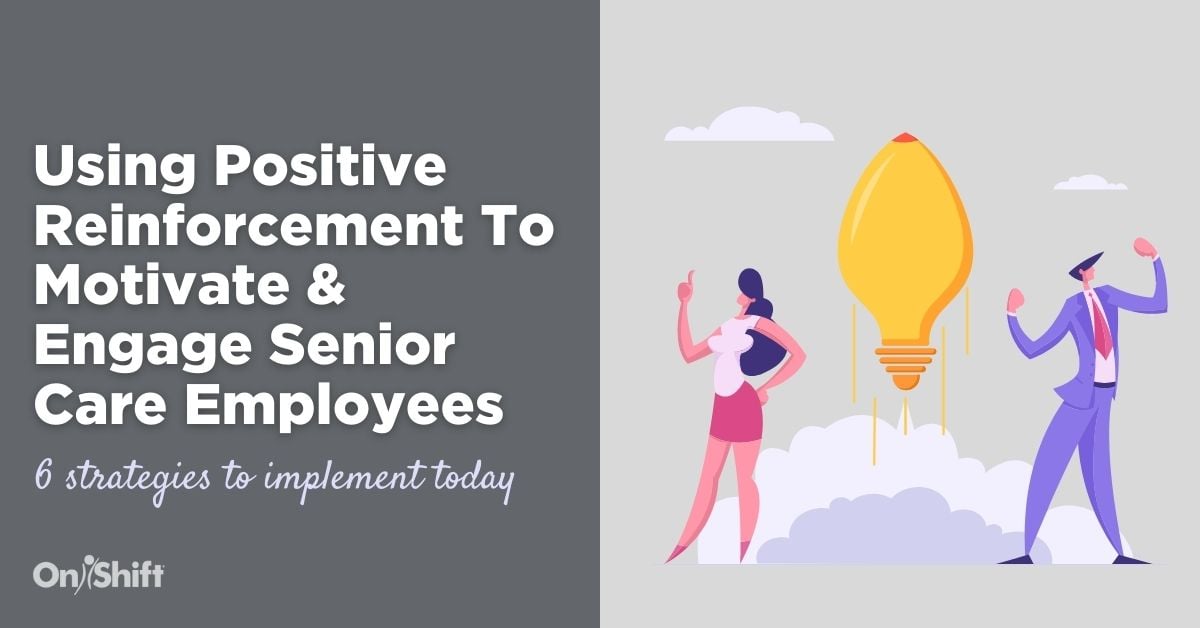April 9, 2021 | Jenna Berris
April 9, 2021 | Jenna Berris
 If you had to guess, which is more effective for motivating employees to do their best work? Positive reinforcement, which rewards employees for doing well, or negative reinforcement, which reprimands undesirable behavior? If you said positive reinforcement, you are, not surprisingly, correct.
If you had to guess, which is more effective for motivating employees to do their best work? Positive reinforcement, which rewards employees for doing well, or negative reinforcement, which reprimands undesirable behavior? If you said positive reinforcement, you are, not surprisingly, correct.
While addressing and correcting poor behavior that occurs is important and the best way to deter an action, a study found that positive reinforcement is the better route to take if you want to inspire employees to keep up the good work...and encourage others to follow in their footsteps.
“Not only is [positive reinforcement] more effective at motivating change, but it’s also less damaging to the employer-employee relationship,” writes Heather R. Huhman for Entrepreneur. The article also says that negative reinforcement, or punishment, leads to higher turnover rates, as employees feel their boss does not trust them.
With this in mind, here are six positive reinforcement strategies you can implement at your organization to spur staff success.
1. Reward Top Performers
One of the most effective ways to applaud jobs well done is through physical rewards. You don’t need to break the bank; even small items like gift cards, company swag and extra PTO go a long way. These rewards should be tied to key behaviors that can be easily and equitably tracked across all employees, such as showing up to work on time, picking up open shifts, not calling off or going above and beyond to help a resident or colleague. Employee engagement software, such as OnShift Engage, makes it easy for managers to track employee performance and systematically distribute rewards. Make sure employees are aware of which behaviors can earn them points for rewards.
2. Publicly Celebrate Successes
Give special shoutouts to employees doing exemplary work for all to see. Your next morning huddle, an all-company meeting and your company newsletter are all great forums for spotlighting these employees. Be sure to share the reason that each employee is being applauded to encourage others to follow suit.
3. Bring Your Mission Statement To Life
Use your mission statement as an anchor for positive reinforcement. When employees see how what they do in the day-to-day contributes to the bigger picture, it gives them a sense of purpose and creates synergy with everyone working toward a common goal. Each time you recognize someone publicly, reiterate how their actions help drive the mission of the company.
4. Collect Feedback
For positive reinforcement to be effective, you need to learn which methods actually motivate your employees. Some will prefer the public recognition method, while others would appreciate a small physical award. Try to tailor your reinforcement for individual employees to ensure they are being celebrated in a way that is meaningful to them. Surveying staff with employee engagement software, like OnShift Engage, is an easy way to collect this information.
5. Promote Growth & Development
Tangible rewards are great, and as mentioned above, can be very meaningful for many. However, the modern workforce’s desire to grow professionally cannot be ignored in this effort. Consider rewarding high performers with a free class related to their career goals. There are plenty of inexpensive courses online that teach a wide variety of skillsets.
Along these lines, be sure to publicly recognize promotions and anniversaries. Highlight the path an employee took to get where they are today to inspire others to follow the same trajectory. Be sure to highlight their behaviors and actions that led to their promotion and how they demonstrate a commitment to your mission.
6. Be Timely & Specific
Recognize good behavior immediately so it’s fresh in the employee’s mind. Be specific about the reason for praise and be sure to recognize other employees who go on to model that behavior in the future. Consistency is key and these efforts cannot be random. Taking an ad hoc approach to positive reinforcement will only lead to disengaged, dissatisfied employees.
Manley Feinberg, a business speaker and author based in St. Louis, says it’s important to keep in mind that while positive reinforcement works wonders in encouraging employees to keep up the good work, poor performance should still be addressed.
“Consistently recognize and reward the behaviors and results you want. Also, beware that when you accept, tolerate or otherwise allow behaviors you don’t want, you are rewarding those as well by continuing to employ and compensate the employee,” she says.
Subscribe to the OnShift Blog
Recent Posts
Categories
About Jenna Berris
Jenna Berris is a Content Marketing Manager for OnShift.
See for yourself why thousands of providers rely on OnShift’s innovative software for recruitment, hiring, workforce management, pay and engagement. Request your personalized demo today.
